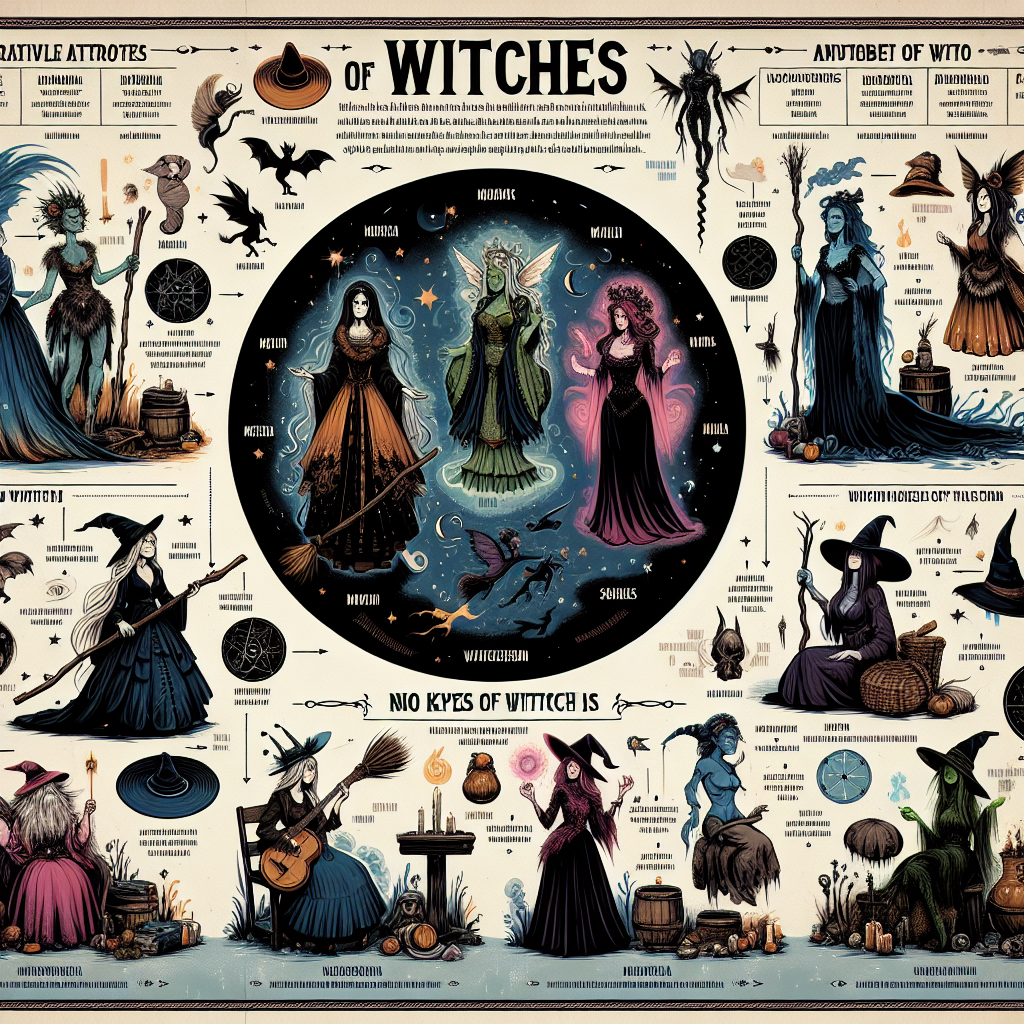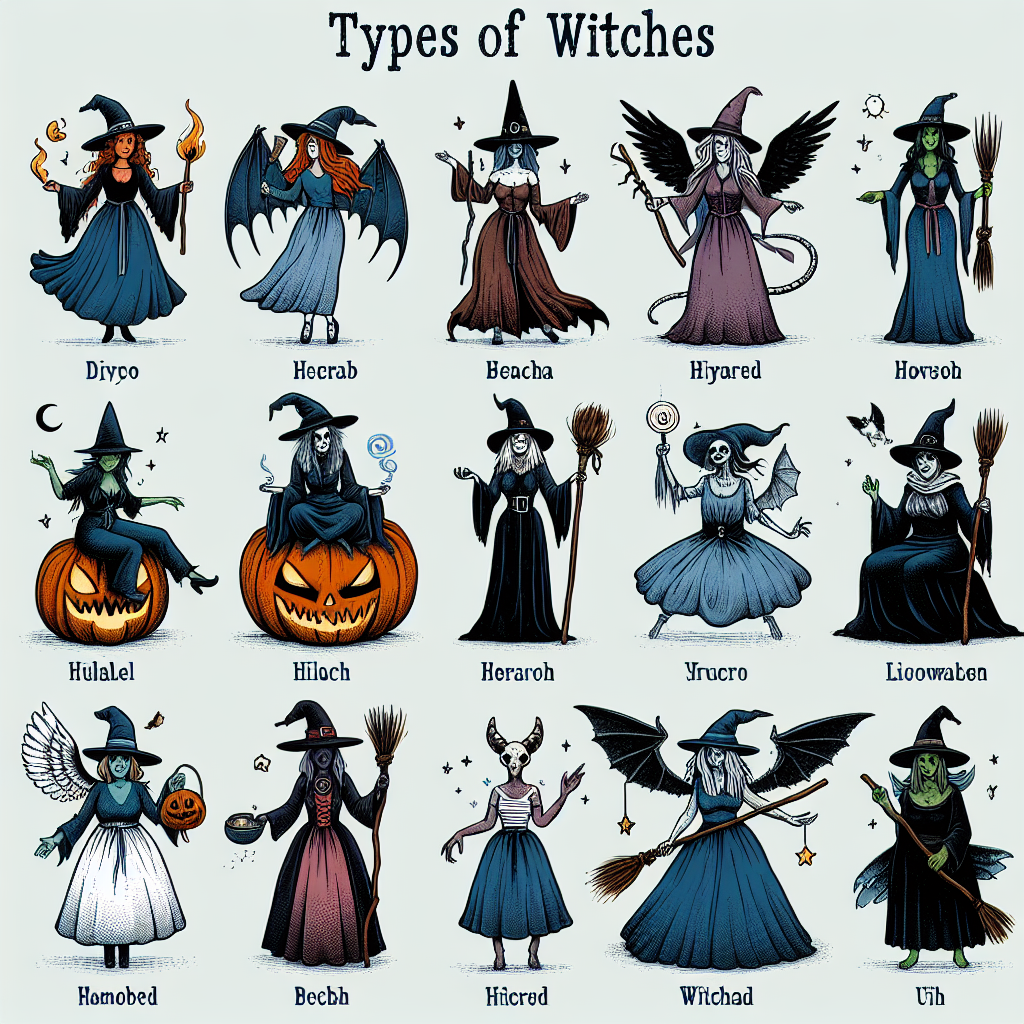As an Amazon Associate I earn from qualifying purchases.

Did you know the belief in witches or witchcraft is not a thing of the bygone era as it is still strongly entrenched in various cultures globally? However, its form and interpretation differ across different geographical and cultural landscapes.
Witchcraft narratives are deeply rooted in the folklore and traditional beliefs of multiple societies, from the smallest tribal communities in remote Africa to the developed western world. The second types of witches, to which we refer as Witches Type 2, dates back to medieval times, where witchcraft was both feared and revered. Back then, local communities believed that witches possess supernatural powers which they harness from the spirit world or by association with the devil. Despite the historical stigmatization, these witches, distinctive for their dual aspect of beneficial and harmful witchcraft, influence contemporary societal and cultural mores.
One of the most enchanting facets of Witches Type 2 is their dichotomous nature – they can either harm or heal. Most commonly found in African and Caribbean cultures, these witches straddle the boundary between black and white magic, casting spells of love, luck, and prosperity or inducing curses of ill fortune, disease, or death. These definitions in a broad term refer to the modern “witch-doctors” or “shamans”.
Interestingly, almost 80% of modern witches reportedly fall under the Witches Type 2 category according to an annual survey conducted by the Pagan Federation. These witchcraft practitioners encapsulate a spectrum of roles from midwives, spiritual healers, and fortune-tellers to sorcerers, necromancers, and curse weavers.
In stark contrast to popular culture's depiction of witches as malevolent beings, most contemporary Witches Type 2 perceive themselves as intermediaries between the physical and spiritual realms. They regard witchcraft as a spiritual path that enables them to channel energies from the cosmos for healing purposes. Every day, millions worldwide turn to these modern witches for advice on love, career, health, and well-being, highlighting the enduring appeal of witchcraft in an age of science and technology.
Despite the growing acceptance of witchcraft, many Witches Type 2 face persecution in regions steeped in superstitions and orthodox beliefs. Reports of violent witch-hunts are not uncommon in parts of Africa, South America, and Asia, where these witches often bear the brunt of societal ill-will during periods of crisis or upheaval. The disturbing persistence of such episodes underscores the contested status of witchcraft in contemporary societies.
Engaging with the complex tapestry of witchcraft and exploring different types of witches, such as Witches Type 2, provides invaluable insight into mankind's timeless quest for meaning, purpose, and power beyond the tangible world. It unravels the enduring human capacity to believe in the unseen, the unknown, and the mystical, even in an era distinguished by scientific advancement and rational thought.
What are the Different Types of Witches? A Comprehensive Explanation
There is a vast array of diversity amongst witches and their practices in various cultures and traditions. The many different types of witches each follow its distinctive practice, beliefs, and rituals – from solitary witches who prefer working alone to hedge witches who have a deeply spiritual relationship with nature. Other types include garden, kitchen, cosmic, and green witches, each specializing in specific areas such as herbs, cooking, astrology, and environmentalism, respectively. By understanding the unique attributes and characteristics of each type of witch, readers can gain a deeper comprehension of witchcraft as a whole. To further explore each type of witch and their practices, let's dive into detailed discussions in the following sections…
Types of Witches Explained: The traditional concept of witchcraft often portrays a woman riding a broomstick or mixing potions in a cauldron. However, in reality, witchcraft varies vastly across cultures, traditions, and personal beliefs. Here, we focus on several different types of witches, each boasting unique kinds of magical practices and philosophies.
Green Witches: Green witches are closely connected to the earth and draw their magical energy from interacting with nature. They usually work with herbs and plants, making potions, and magic related to the earth itself. These practitioners are apt at herbalism, environmental conservation, and gardening.
Hedge Witches: Hedge witches perform what's known as “hedge jumping,” which is astral travel or journeying to the spirit world. They are considered solitary and their practice involves the mystical, shamanic aspect, including communication with spirits.
Kitchen Witches: Kitchen witches use food and the culinary arts as an intrinsic part of their witchcraft. They are much related to hearth witches and blend their magic into recipes and use food items for magical purposes—making every meal an enchanted experience.
Cosmic Witches: Cosmic witches are practitioners who use cosmic and celestial energies in their practice. They study and utilize astrology, horoscopes, and the alignment of the planets, as well as the power of the sun, moon, and stars in their magical workings.
Sea Witches: Sea witches find their magic in the ocean and maritime activities, practicing sea and weather magic. They have a strong connection to water and oceanic creatures and often use sea-related items in their rituals and spells.
Dianic Witches: This branch of witchcraft is embraced mainly by women, focusing on the Divine Feminine. Dianic witches prioritize female welfare, rights, and empowerment—both in their magic and daily lives. Many Dianic witches practice solo.
Hereditary Witches: These witches are individuals born into witchcraft traditions. Their practices, handed down from generations, often maintain age-old rituals, spells, and traditions. They learn and practice the craft from an early age.
This enumeration is far from exhaustive, for witchcraft is a broad and diverse practice that varies greatly from one culture to another, even from individual to individual. It is important to note that many witches incorporate elements from different types into their practice, and it's this diversity that makes witchcraft so personally powerful and flexible.
The breadth and diversity of witchcraft only highlight its growing acceptance and fascination worldwide. Studies reveal that witchcraft and related practices are on the rise, according to Quartz, which reports a 2014 study found that the number of practicing witches and Wiccans in the US had an estimated rise to about a staggering 1.5 million.
Q1: What are the different types of witches mentioned in the article?
A: The article mentions several types of witches, including Forest witches, Green witches, Hearth witches, Fairy witches, Hereditary witches, Kitchen witches, Cosmic witches, and Sea witches among others.
Q2: Can you give me a brief explanation of a Forest witch?
A: A Forest witch is a witch who feels a special connection with the forest or the wilderness. They might use elements from the forest in their rituals and are usually deeply knowledgeable about flora and fauna.
Q3: Does a hereditary witch have to come from a family of witches specifically?
A: Yes. Hereditary witches are individuals who are born into witchcraft. It's a tradition handed down from generation to generation within their family.
Q4: What does a Green witch practice, is it solely related to nature?
A: Green witches are typically very in tune with nature and focus their practice on the earth and its elements. They often use plants and herbs in their craft, and may practice outdoors, in gardens or in wild spaces.
Q5: What is a Sea witch?
A: A Sea witch is someone who draws their energies and powers primarily from the sea and sea-related aspects. They usually perform water-based magick or even worship sea deities.
Q6: So, can anyone become a witch or do you have to be born as one?
A: While some types of witches, like hereditary witches, stem from families with traditions of witchcraft, others, such as green witches or kitchen witches, involve practices that anyone could learn and incorporate into their life. It depends on the specific path and practice.
Q7: Is it possible to be a combination of several types of witches?
A: Absolutely. Many witches blend different practices and traditions to create a path that feels most authentic and empowering to them.
Q8: Can a Kitchen witch use their practice in everyday life?
A: Yes, Kitchen witches often integrate their practice into their everyday life. Their practice typically centers around the home and hearth and can be as simple as imbuing the meals they cook with intention and magic.
Q9: What sort of practice does a Cosmic witch follow?
A: A Cosmic witch is a witch who uses planetary and celestial energy in their practices. They may follow astrological signs and the alignment of the planets, and incorporate that knowledge into their rituals and spell work.
Q10: Are there specific deities associated with each type of witch?
A: Some witches may choose to honor and work with specific deities, while others may not. The choice to work with deities is personal and can vary even within the same type of witchcraft.
Conclusion
In essence, witchcraft varies significantly across disparate cultures, time periods, and belief systems, leading to numerous types of witches. From the guttural fierceness of the Pagan witch, the harmony of the Green witch, and the charm of the Kitchen witch, we've explored an array of distinctive categories. We've tackled historical classifications like Traditional witch to modern types like Eclectic witches who showcases the fluidity and progression of witchcraft. The Hedgewitch embodies the solitary nature of witchcraft, while the Sea witch's bond to water signposts the elemental aspects of the craft.
While these categories offer a useful framework, we must remember that they aren't rigid or definitive, and witches often dabble in multiple domains, forming a hybridized set of beliefs and rituals unique to them. Emphasizing diversity and individuality, witchcraft allows its practitioners to connect with the natural world, engage in divination, and execute rituals and spells as per their inclination and orientation. Whether viewed through the lens of religion or mythology, history or modernity, witches and witchcraft represent a symbolic rebellion against the suppression of the divine feminine and the empowerment of self through connection with the forces beyond our comprehension.
Amazon and the Amazon logo are trademarks of Amazon.com, Inc, or its affiliates.


